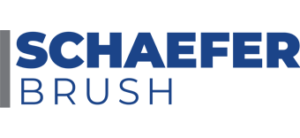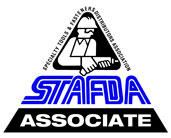Schaefer Brush Series 8138 Overview

What is the 8138 Series?
The 8138 series is a series of welder brushes with different filament materials that each serve a different purpose. Each plastic handle is filled with wire filament and stapled to the head of the brush on one side.
Schaefer Brush is a leading American manufacturer of these brushes. This machine can make 10,000 brushes per shift. The plastic handles with ergonomic finger grooves, make the handle ideal for grip and precision in harder to reach areas. This design factor is important because welding brushes need stability and precision for the jobs they are used in.
What different Filament Types are there?
There are 7 different filament types, each serving its own purpose and use in different industries.
- Aluminum
- Brass
- Bronze
- Carbon Steel
- Horsehair
- Nylon
- Stainless Steel
How do I Match a Filament to a Task?
When selecting a scratch brush filament, consider:
- Material compatibility (to avoid contamination or damage)
- Cleaning intensity (light vs. aggressive)
- Environmental safety (spark risk, corrosion resistance)
Applications of Filaments
Welding brushes are essential tools for surface preparation, cleaning, and finishing in metalworking. The type of filament used in a scratch brush directly affects its performance, durability, and suitability for specific tasks. Here’s a breakdown of common filament types and their best-use scenarios:
- Aluminum Wire
Best for: Lightweight cleaning of non-ferrous metals
Why use it:
Softer than steel, reduces surface damage
Non-magnetic and corrosion-resistant
Lightweight and easy to handle
Applications:
Aircraft and automotive components
Non-ferrous metal cleaning
Surface prep without contamination - Brass Wire
Best for: Gentle cleaning of many metals
Why use it:
Softer than steel
Non-sparking
Won’t scratch softer metals
Applications:
Electrical components
Soft metal surfaces - Bronze Wire
Best for: Non-sparking cleaning of soft to medium metals
Why use it:
Medium abrasiveness for effective cleaning
High corrosion resistance
Conductive but non-magnetic
Applications:
Oil & gas equipment cleaning
Marine surface prep
Electrical component maintenance - Steel Wire
Best for: General cleaning of surfaces, light rust and dirt removal, surface preparation
Why use it:
Consistent brushing action
Heat-resistant
Applications:
Carbon steel surfaces
Weld seam cleaning
Removing paint or rust - Stainless Steel Wire
Best for: Non-contaminating cleaning on stainless and non-ferrous metals
Why use it:
Corrosion-resistant
Non-reactive with stainless steel
Maintains surface integrity
Applications:
Stainless steel welds
Aluminum and brass cleaning
Food-grade and medical equipment prep - Horsehair
Best for: Dusting, polishing, and fine cleaning
Why use it:
Extremely gentle on delicate surfaces
Non-sparking and non-conductive
Ideal for organic and sensitive materials
Applications:
Glass and wood cleaning
Soft metal polishing
Art restoration and optics maintenance - Nylon Filament
Best for: Light-duty cleaning, polishing, and deburring
Why use it:
Flexible and non-abrasive
Safe for most delicate surfaces
Applications:
Plastic and wood surfaces
Light rust or paint removal
Surface finishing and prep










 2025
2025
Leave a Reply
Want to join the discussion?Feel free to contribute!